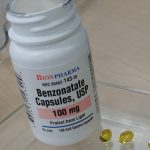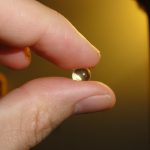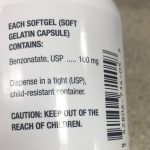Can You Take Benzonatate And Nyquil?

Benzonatate is a medication used to treat cough caused by the common cold or other respiratory infections. It works by numbing the throat and lungs, which reduces the cough reflex and makes it easier to cough up mucus.
Benzonatate comes in capsule form and is usually taken by mouth 3 times a day as needed. The medication should be swallowed whole and should not be crushed, chewed, or dissolved in the mouth, as this can cause numbness or tingling in the mouth and throat.
Nyquil on the other hand is an over-the-counter medication used to relieve symptoms associated with the common cold and flu, such as cough, runny nose, sneezing, fever, and body aches. It contains a combination of active ingredients, including acetaminophen (a pain reliever and fever reducer), dextromethorphan (a cough suppressant), and doxylamine succinate (an antihistamine and sedative).
Nyquil comes in liquid form and is usually taken orally, with the recommended dosage depending on the specific formulation and age of the patient. It is important to follow the dosage instructions on the label carefully and not exceed the recommended dose, as this can lead to serious side effects.
Can You Take Benzonatate And Nyquil?
No, it is generally not recommended to take Benzonatate and Nyquil together as both medications can cause drowsiness and have the potential to depress the central nervous system.
Benzonatate is a cough suppressant used to treat cough caused by the common cold or other respiratory infections, while Nyquil is a combination medication used to relieve cold and flu symptoms such as cough, runny nose, and congestion.
Both Benzonatate and Nyquil contain active ingredients that can cause sedation and respiratory depression, such as dextromethorphan in Nyquil and benzonatate in Benzonatate. Taking both medications together can increase the risk of serious side effects, including difficulty breathing, dizziness, and confusion.
Side Effects
Taking Benzonatate and Nyquil together can increase the risk of side effects, as both medications have the potential to cause drowsiness and respiratory depression.
The side effects of Benzonatate may include dizziness, headache, constipation, and nausea. In rare cases, serious side effects such as difficulty breathing, chest pain, and allergic reactions can occur.
The side effects of Nyquil may include dizziness, drowsiness, dry mouth, upset stomach, and blurred vision. In rare cases, serious side effects such as liver damage, allergic reactions, and respiratory depression can occur.
Taking both Benzonatate and Nyquil together can increase the risk of side effects such as drowsiness, confusion, difficulty breathing, and respiratory depression. It is important to follow the dosage instructions on the label carefully and not exceed the recommended dose of either medication.
If you experience any unusual or severe symptoms while taking Benzonatate and Nyquil together, it is important to seek immediate medical attention.
If you are experiencing cough and cold symptoms and are unsure which medication to take, it is best to consult with a doctor or healthcare professional who can recommend the most appropriate treatment for your specific situation.





